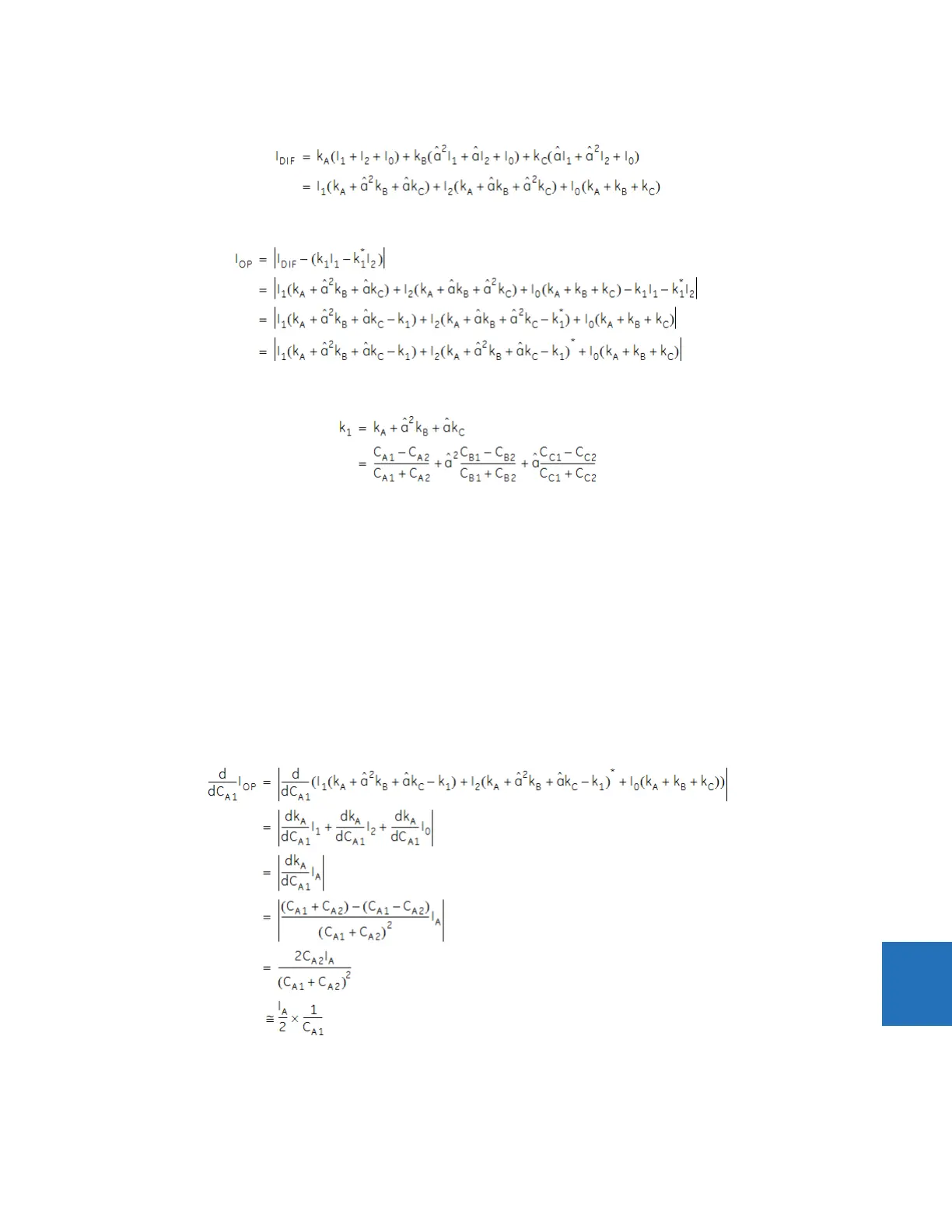CHAPTER 9: THEORY OF OPERATION OVERVIEW
C70 CAPACITOR BANK PROTECTION AND CONTROL SYSTEM – INSTRUCTION MANUAL 9-17
9
Also, convert from phase coordinates into sequence components as follows, and equation 9.60 becomes:
Eq. 9-62
Substituting this into equation 9.54, we get:
Eq. 9-63
The capacitor bank positive sequence inherent unbalance factor setting k
1
is chosen to be:
Eq. 9-64
This allows the first and second terms in the I
OP
equation to vanish. The last term, being the product of two small numbers,
virtually vanishes as well. Under normal system conditions (non-fault), the zero-sequence voltage and thus the zero-
sequence current is small. The k
A
, k
B
, and k
C
value involve the difference between two capacitances that are factory
matched, and so are also small. In addition, it is very likely that they are of varying signs, and thus their sum is doubly small.
Thus the initial operating signal under normal operating conditions is seen to be virtually zero.
9.1.6.3 Sensitivity
Now consider the consequences of an element failure in a typical string, say string A1, making a small capacitance change
in the C
A1
capacitance. The effect on the operating signal can be calculated by taking the derivative of equation 9.63 with
respect to C
A1
.
In the general case, the derivative of the absolute value function is messy, but in our case where the initial value is zero, the
derivative of the absolute function is simply the absolute value of the derivative of its argument. We assume here that the
currents remain constant, which investigation has shown results in negligible error. The derivative is thus:
Eq. 9-65

